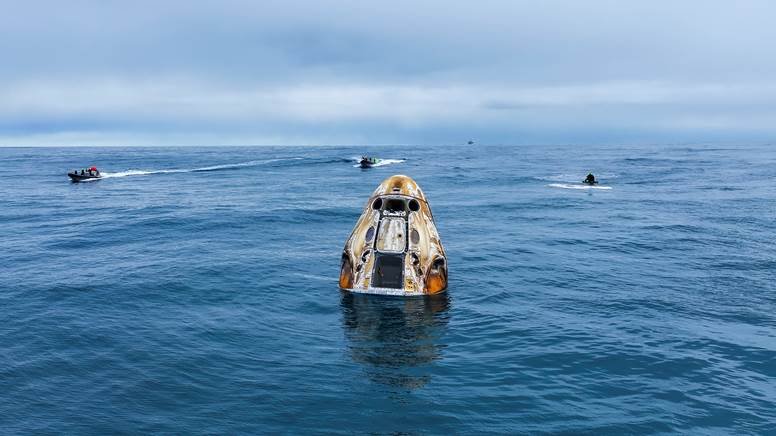
After three weeks in orbit and over two weeks docked at the International Space Station (ISS)—the longest-duration “visiting” station flight of all time—AxiomSpace, Inc.’s third Private Astronaut Mission (PAM), successfully concluded Friday with a smooth 8:30 a.m. EST splashdown of the SpaceX Dragon Freedom spacecraft off the Florida Coast, near Daytona Beach. Former shuttle flyer, veteran ISS commander and America’s premier spacewalker Mike Lopez-Alegria, of U.S. and Spanish heritage, together with Italy’s Walter Villadei, Alper Gezeravcı—the first national space traveler of Türkiye—and European Space Agency (ESA) astronaut Marcus Wandt, who has Swedish and Norwegian ancestry, wrapped up the Ax-3 mission after 21 days, 15 hours and 40 minutes in space, 338 orbits of Earth, more than 30 research experiments completed and over 50 educational outreach events.
“The successful return of our Ax-3 astronauts signifies more than just the completion of a human spaceflight mission; it marks a pivotal moment in commercial space exploration and a significant milestone for Europe’s pursuits in low-Earth orbit,” said AxiomSpace CEO Michael Suffredini. “AxiomSpace’s first three commercial missions to the ISS are a testament to international advancement in space, with diverse crews representing eight nations, as well as—for the first time on Ax-3—the European Space Agency.”
Departure of Dragon Freedom was targeted for early last Saturday but postponed initially until Monday, then Tuesday at the earliest in response to poor weather conditions in the primary recovery zone off the Florida Coast. At length, Lopez-Alegria, Villadei, Gezeravcı and Wandt undocked from the forward-facing port of the station’s Harmony node at 9:20 a.m. EST Wednesday to begin their 47-hour return to Earth.
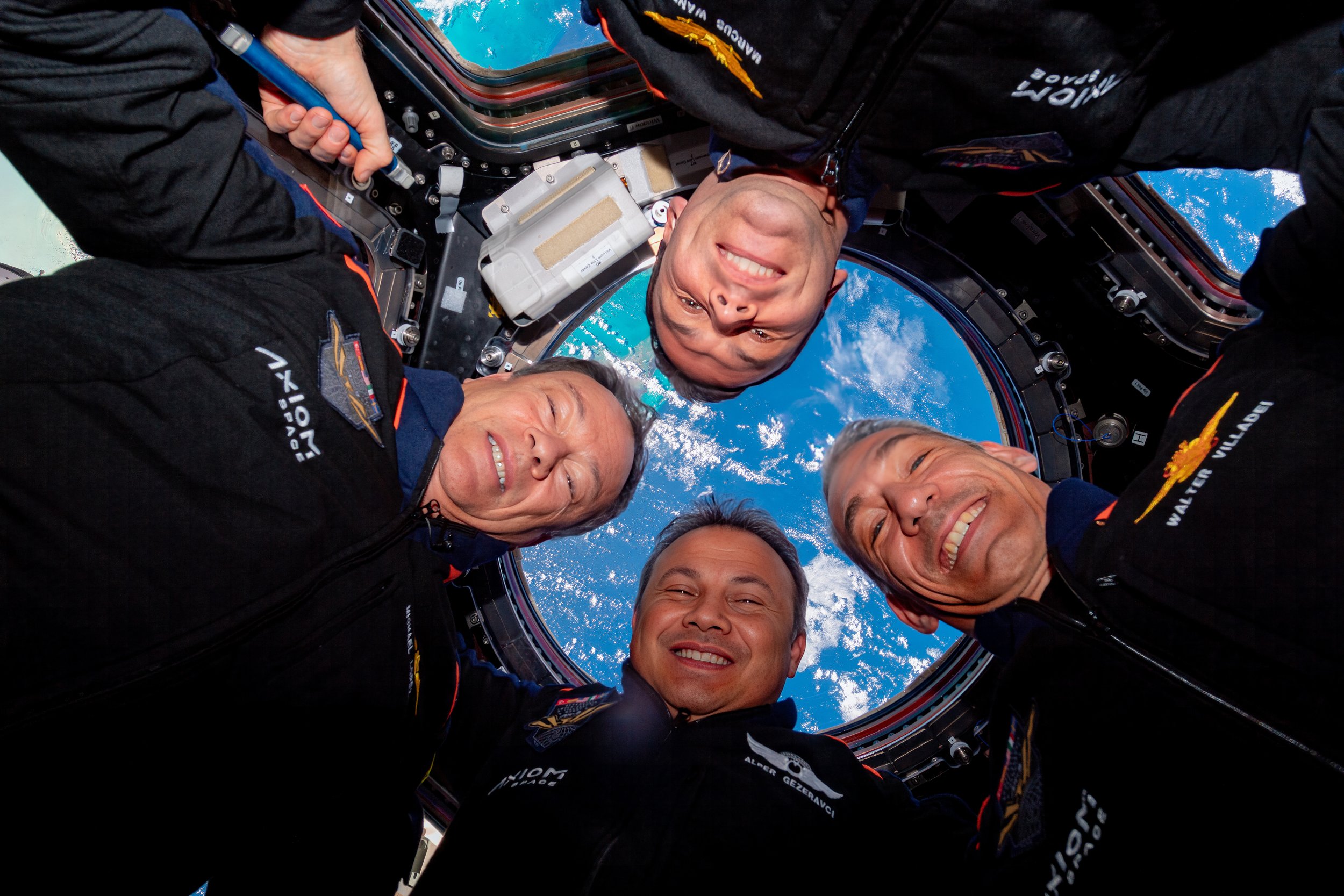
In doing so, they brought down the curtain on a remarkable mission which began at 4:49 p.m. EST on 18 January with Dragon Freedom’s launch atop a five-times-used Falcon 9 booster from historic Pad 39A at the Kennedy Space Center’s (KSC) in Florida. Within hours of reaching orbit, the quartet checked in with ground controllers, revealing their zero-gravity indicator—the teddy bear Gigi, a collaboration between AxiomSpace and Build-A-Bear—and shared their experiences of launch.
“Amazing ride uphill,” said Lopez-Alegria, who became the first American in two decades to break the mythical “John Young Glass Ceiling” and reaching a sixth career space mission. He also became the first person to log two Crew Dragon flights, having commanded Ax-1 in April 2022, and the first U.S. astronaut to fly five times to the ISS: twice aboard the shuttle, once on Russia’s Soyuz and now twice with SpaceX.
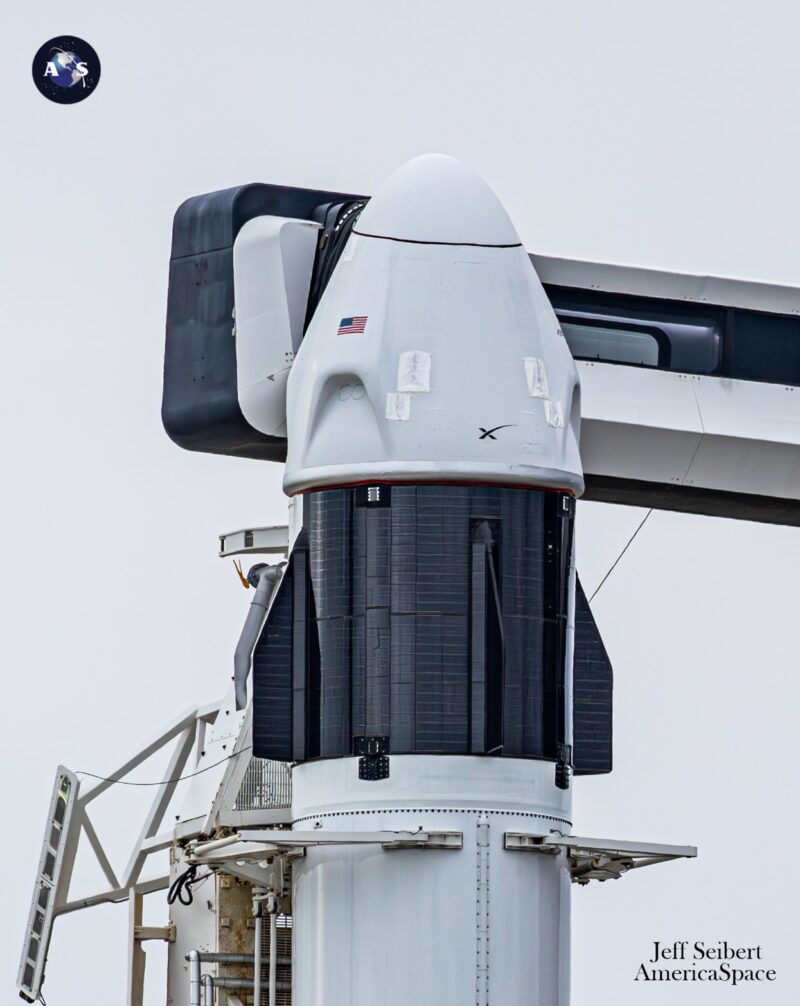
Despite his experience, Lopez-Alegria related that the crew “let out a bit of a whoop” as they entered space. Villadei, an Italian Air Force colonel, described the “surprising” transition from the Falcon 9’s first to second stages during ascent, whilst Wandt—the first European Space Agency (ESA) spacefarer to fly a commercial ISS mission outside of NASA or Roscosmos, as well as having enjoyed the shortest selection-to-flight regime of any professional spacefarer, having been chosen as an ESA project astronaut just over a year ago in November 2022—spoke of the “pure joy” of being in orbit, the art of repositioning himself in microgravity and the “really weird” sensation of weightlessness.
After 37 hours in independent flight, and 24 orbits completed, Dragon Freedom docked autonomously at the space-facing (or “zenith”) port of the station’s Harmony node at 5:42 a.m. EST on 20 January. At the time of docking, the two space vehicles were traveling about 262 miles (422 kilometers) above the Pacific Ocean, west of South America.
“I’m not sure they could have chosen a more scenic backdrop,” Expedition 70’s Jasmin Moghbeli tweeted, sharing photographs of Dragon Freedom during its final approach. About 90 minutes after docking, following pressurization and leak checks, hatches into the station were opened and the four new arrivals were swarmed by the seven-member Expedition 70 crew: NASA’s Moghbeli and Loral O’Hara, Japan’s Satoshi Furukawa, Russia’s Oleg Kononenko, Konstantin Borisov and Nikolai Chub and Commander Andreas Mogensen, an ESA astronaut from Denmark.
During the crew welcoming ceremony inside Harmony, Lopez-Alegria pinned ceremonial pins on Villadei, Wandt and Gezeravcı to honor their astronaut status. They set up their sleeping quarters, with Lopez-Alegria in the “campout” area of the Quest airlock, Villadei aboard Dragon Freedom, Gezeravcı in Japan’s Kibo lab and Wandt in Europe’s Columbus lab and worked to unload cargo for a busy two-week stay.
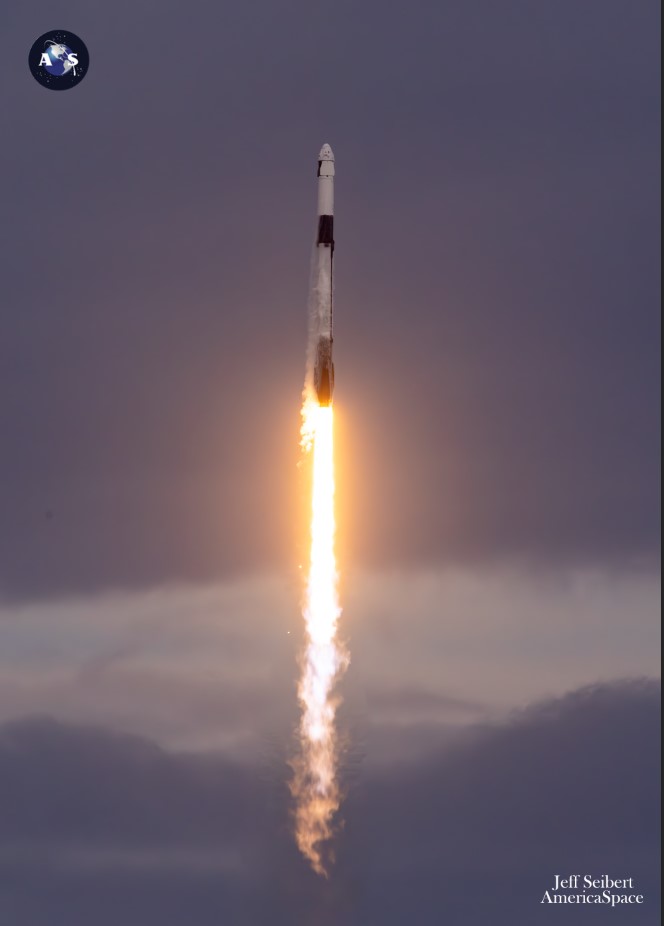
After spending the weekend of 20-21 January familiarizing themselves with ISS systems and emergency procedures, the Ax-3 crew briskly set to work on an expansive plate of research: 36 experiments—15 from the Italian Space Agency (ASI) and the Italian Air Force, eight from Türkiye Uzay Ajansı (TUA, the national space agency of Türkiye) and 13 from ESA and the Swedish National Space Agency (SNSA)—which were designed to feature 350 hours’ worth of activity devoted to human health and wellbeing, robotics and technology, radiation exposure, genetic expression and Earth observations.
Italy’s Ax-3 research complement included projects to characterize distinctive molecular signatures of circulating biomarkers known to be altered under microgravity conditions, as part of continuing work to understand impacts upon human health. Villadei labored extensively on a University of Rome experiment to investigate the prevention or reversal of degenerative conditions like Alzheimer’s disease, together with others emphasizing vascular health, physiological adaptation mechanisms, ovarian cell behavior and the changeability of cognitive skills over time in space.
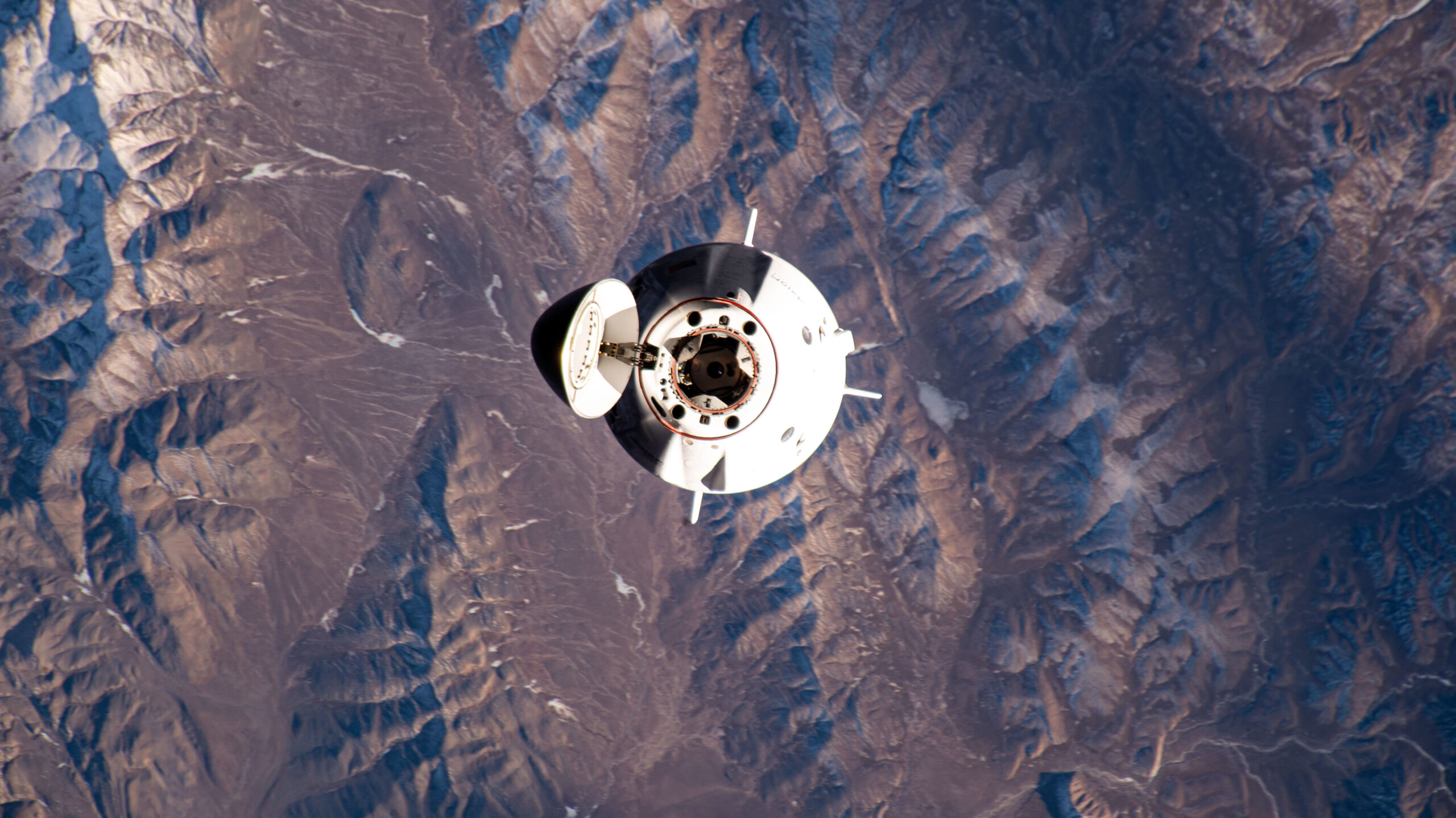
Villadei also wore a “smart” flight suit fitted with sensors to measure his heartbeat, body temperature and movement, as well as allowing him to evaluate its comfort characteristics and fabric behavior. He also tested an Italian-built muscle monitoring suit with compressional properties to correct fluid shifting and performed experiments into high-energy radiation particles and their effect upon various shielding textiles and materials.
Gezeravcı worked on a Türkiye-provided space botany experiment, sponsored by Yildiz Technical University in Istanbul and Ege University in Izmir, which seeks to develop life-support mechanisms for future space missions. Other investigations sponsored by his homeland looked at the stress response to weightlessness of thale cress (a member of the mustard family), the performance of high-strength, high-toughness and corrosion-resistant Medium Entropy Alloys (MEAs) and High Entropy Alloys (HEAs) and a student study of Propolis, a natural extract from bees (nicknamed “bee-glue”) which could carry antioxidant and anti-inflammatory properties.
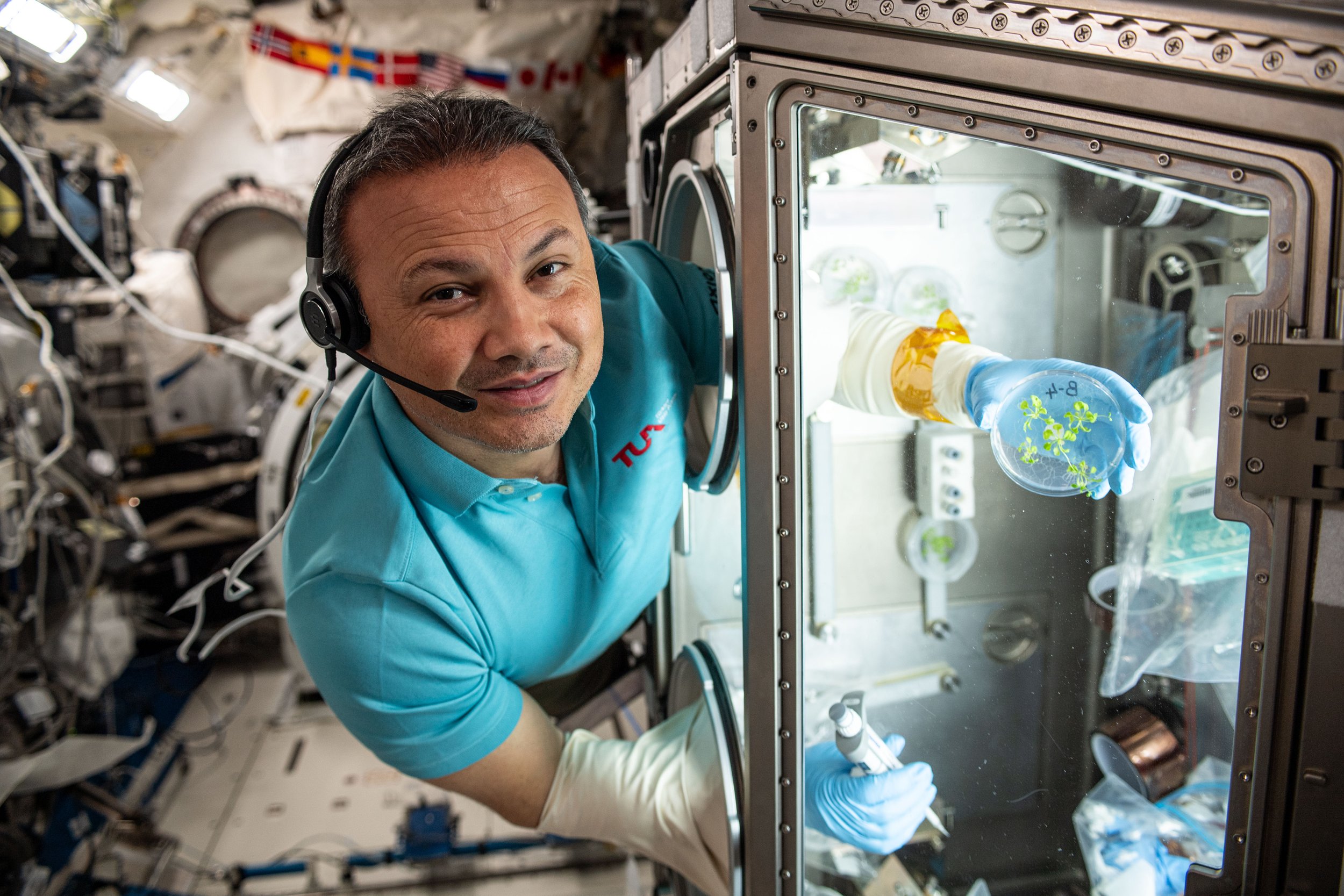
Wandt conducted the joint ESA/Roscosmos Plasma Kristall-4 experiment to understand low-temperature gaseous plasmas of ionized and neutral gas and micron-sized particles. He also wore the non-invasive functional Near-Infrared Spectroscopy (fNIRS) instrumented skullcap inside the Columbus lab to record the activity of his brain and central nervous system to understand stress levels and recovery rates in confined and isolated environments. Other ESA-furnished investigations emphasized cardiovascular change, the effect of radiation upon DNA repairability, neural stem-cell research and sleep behaviors.
A free-flying robotic helper, the Crew Interactive MObile CompanioN (CIMON) was put through its paces to execute tasks and respond to verbal commands, a head-mounted virtual-reality tool for on-board training will be trialed and the Thor-Davis high-speed camera imaged lightning and thunderclouds at up to 100,000 frames per second to ascertain precisely what occurs during strike events.
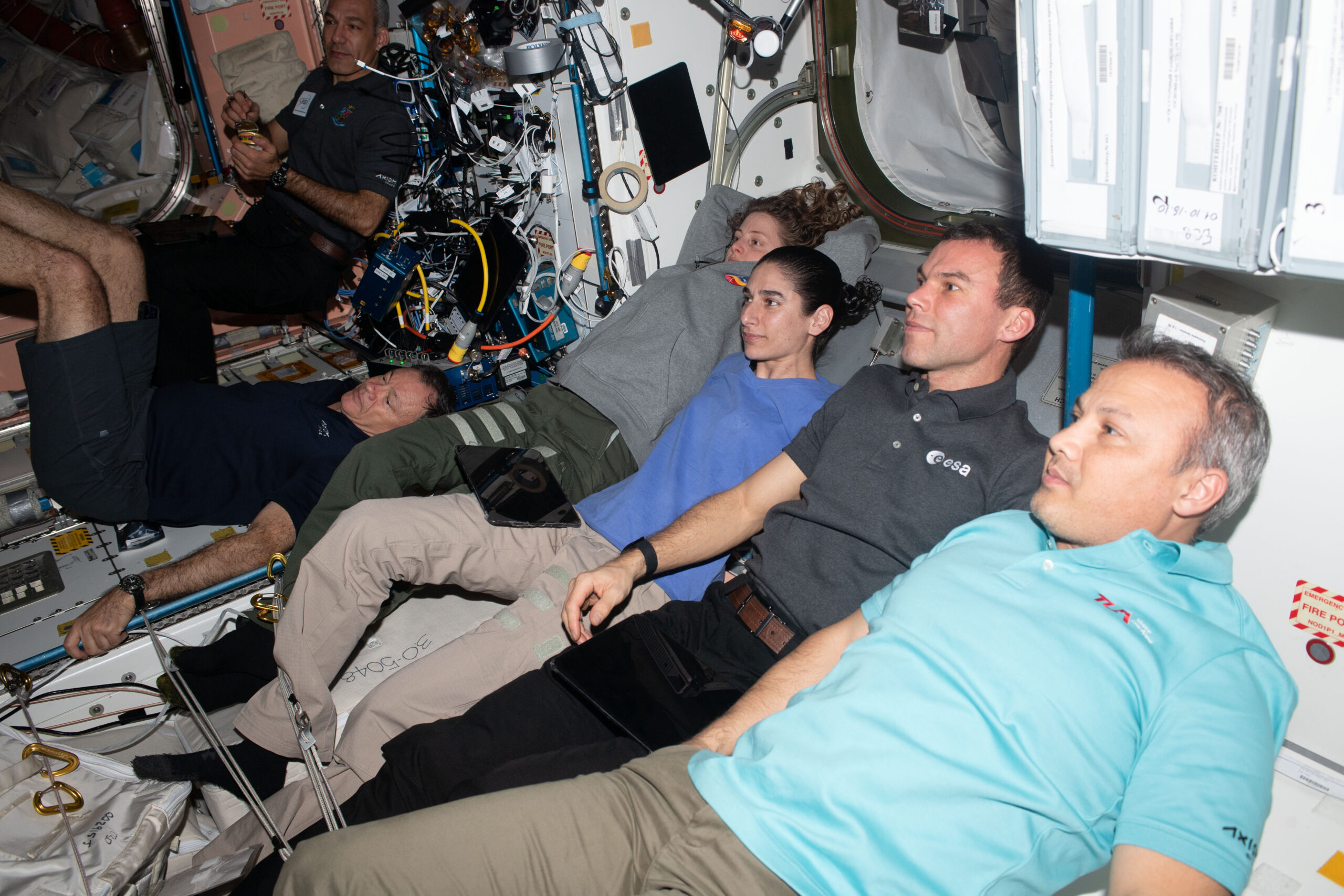
Added to that list, the Ax-3 crew completed food consumption diaries and Italy provided a Barilla ready-to-heat-and-taste pasta “to develop a broader range of tasty foods in space”. On 26 January, Villadei prepared the pasta and completed a questionnaire on its preparation, aroma, texture, taste and overall “eating experience”.
The astronauts also participated in more than 50 outreach events, including interviews with space professionals in Vienna, Austria, the Space Generation Advisory Council (SGAC), a 27,000-strong network of students and space professionals spanning more than 165 countries, and newspapers from Scandinavia. They also spoke with the President of Türkiye, Recep Tayyip Erdoğan.
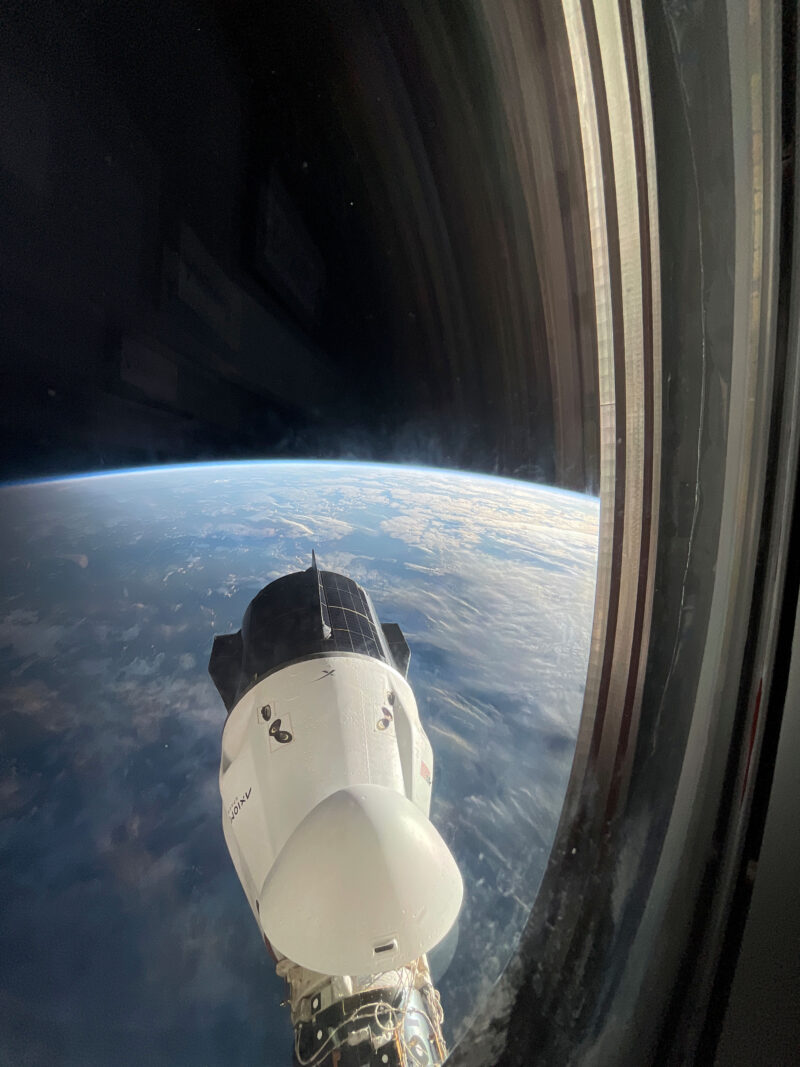
The Expedition 70 crew had several parts of their own scheduled blocked-off to assist the Ax-3 quartet with their work, activating and setting up the KEyence Research MIcroscope Testbed (KERMIT) and the Life Science Glovebox (LSG) and helping to transfer samples back inside Dragon Freedom for the return to Earth. A single off-duty day on 27 January allowed Lopez-Alegria, Villadei, Gezeravcı and Wandt a chance to catch up with family members and friends back home.
Outreach proved equally as significant as research on this mission. Villadei spoke with medical professionals, children in an Italian pediatric hospital and his country’s prime minister, Giorgia Meloni, whilst Gezeravcı participated in a “fireside chat” with the Türkiye Minister of Industry and Technology and Türkiye’s global news agency, Turkish Radio and Television Corporation/Anadolu Agency and spoke to kindergarten and nursery children in Ankara. The crew shot video tours and 360-degree views of their time aboard the ISS and Lopez-Alegria took time to speak to midshipmen at the U.S. Naval Academy, Star Trek actress Melissa Navia (who plays helmsman Erica Ortegas) and his former Ax-1 crewmates Larry Connor, Mark Pathy and Eytan Stibbe.
At a farewell ceremony with the Expedition 70 crew on 2 February, the Ax-3 astronauts thanked their hosts for their kindness and support. And in individual remarks, Gezeravcı praised his homeland’s “bold and determined decision” to enter the human spaceflight arena “on our prideful centennial”, with the Republic of Türkiye—whose new national name formally came into being on an international stage in May 2022—having observed its hundredth anniversary last year.
But they could hardly have known that they still had a week left in orbit, as undocking plans between last Saturday and Tuesday came to nought, due to poor predicted weather in the recovery zone. The Ax-3 crew stowed completed science experiments and emergency gear inside Dragon Freedom and took time exercising, videotaping crew activities and viewing the grandeur of Earth from the station’s multi-windowed cupola.
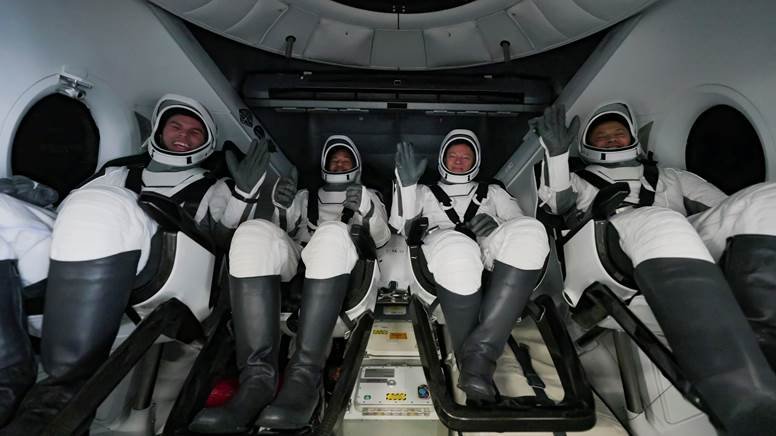
With around 550 pounds (250 kilograms) heading back home with the four men, hatches between Dragon Freedom and the station were closed at 7:25 a.m. EST Wednesday. Undocking occurred at 9:20 a.m. EST, as the complex flew high above the Pacific Ocean, west of Ecuador, with splashdown targeted for early Friday morning.
Following today’s safe homecoming of Lopez-Alegria, Villadei, Gezeravcı and Wandt, Houston, Texas-headquartered AxiomSpace noted that it is tracking no earlier than October 2024 to launch its next ISS-bound flight, Ax-4. Crew members have yet to be announced, as does the specific Crew Dragon vehicle, although with Endeavour earmarked for the upcoming Crew-8 increment, Resilience aimed at the Polaris Dawn mission, the contenders are Freedom, Endurance—currently in orbit, slated to return Crew-7’s Moghbeli, Mogensen, Furukawa and Borisov home in the next few weeks—or an as-yet-unnamed fifth Crew Dragon which SpaceX expects to bring online later this year.




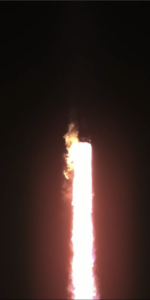
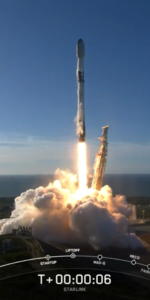
2 Comments
Leave a Reply2 Pings & Trackbacks
Pingback:SpaceX Launches Record-Setting Merlin Engine, Returns Record-Tying Booster to Safe Landing - AmericaSpace
Pingback:Crew-7 Returns Safely, Ends 6.5-Month Space Station Mission - AmericaSpace